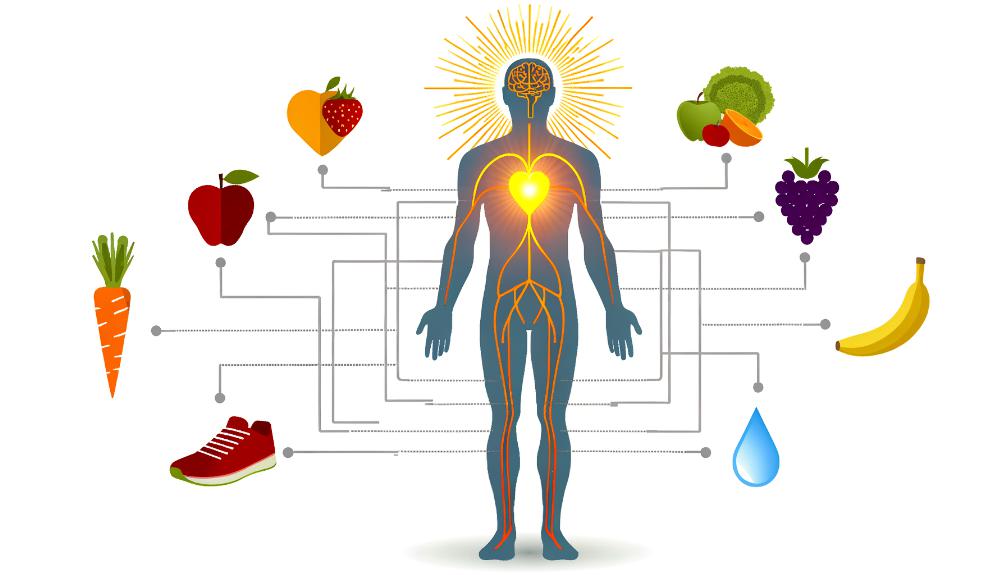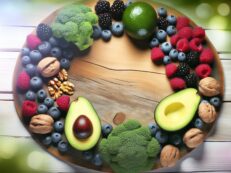
Eating well, living well, and feeling well are interconnected goals that hinge on understanding the Nutrient Rich Foods (NRF) Index. You've likely pondered which foods pack the biggest nutritional punch for your health, but navigating the vast ocean of dietary advice can be overwhelming.
By prioritizing nutrient-dense foods, you're taking a significant step toward optimizing your meals for maximal health benefits. However, the journey doesn't stop there. The challenge lies in integrating diversity and balance into your diet, a topic we'll explore further.
Why is this balance crucial, and how can you track and adjust your progress effectively? Stay tuned to uncover strategies that can transform your approach to eating for health.
Understanding the NRF Index
To fully unlock the potential benefits of the Nutrient Rich Foods (NRF) Index, it's crucial to grasp how it measures the nutritional quality of foods. The NRF calculation methods are based on a balance between beneficial nutrients to encourage (like fiber, protein, vitamins, and minerals) and those to limit (such as saturated fat, added sugars, and sodium). This dual consideration ensures a comprehensive assessment of a food item's nutritional value, guiding you towards healthier choices.
However, understanding the Index limitations is equally important. One key limitation is the potential oversimplification of complex nutritional profiles. Not all nutrients are weighted equally, which might lead to undervaluing or overvaluing certain foods based on their composition. Furthermore, the NRF doesn't account for the bioavailability of nutrients—how well your body can absorb and use them. This means foods rich in certain nutrients mightn't be as beneficial as the Index suggests if those nutrients aren't easily absorbed by your body.
Evaluating Your Current Diet
Assessing your current diet is the first step towards aligning your eating habits with the Nutrient Rich Foods (NRF) Index's guidelines for optimal health. You'll need to take a hard look at what you're eating on a daily basis, not just the kinds of foods but also their quality, quantity, and how they fit into your overall lifestyle, including any food allergies you might have.
Start by keeping a food diary for a week. Write down everything you eat and drink, no matter how small. This record will reveal patterns in your eating habits, including your reliance on processed foods versus whole foods, your caloric intake, and any gaps in essential nutrients. It's crucial to be honest and thorough during this process.
Next, analyze your caloric intake in comparison to your energy expenditure. This balance is fundamental to maintaining or reaching a healthy weight, a key component of overall health. Also, consider food allergies which can significantly impact your diet's effectiveness and may require special dietary adjustments.
Prioritizing Nutrient-Dense Foods
Once you've evaluated your current diet, it's crucial to focus on incorporating nutrient-dense foods that offer the most vitamins, minerals, and other essential nutrients per calorie. These foods not only fuel your body more efficiently but also play a pivotal role in optimizing your health through the Nutrient Rich Foods (NRF) Index. However, it's essential to consider personal dietary restrictions, such as food allergies, which may necessitate alternative sources to ensure a balanced intake without compromising safety or nutritional value.
Moreover, seasonal variations significantly impact the availability and nutrient content of many foods. Embracing seasonal eating not only supports local agriculture but often provides you with fresher, more nutrient-packed options. For instance, fruits like berries and vegetables such as leafy greens are more nutrient-dense during their peak seasons. This approach ensures you're getting a variety of nutrients throughout the year, adapting your diet to include the most beneficial and seasonally fresh foods.
In essence, prioritizing nutrient-dense foods requires a mindful approach to your dietary choices, taking into account personal health considerations and the natural cycles of food production. By doing so, you'll maximize the benefits derived from the NRF Index, leading to improved overall health.
Planning Your NRF-Optimized Meals
Crafting NRF-optimized meals starts with understanding the specific nutrient profiles of various foods and how they contribute to your dietary goals. Meal prepping plays a crucial role in this process, as it allows you to plan and prepare your meals in advance, ensuring that you're consistently consuming a nutrient-dense diet. By dedicating time each week to meal prepping, you can make informed choices about the ingredients you're using, focusing on incorporating a variety of seasonal ingredients.
Seasonal ingredients aren't only fresher and more flavorful, but they also tend to have a higher nutrient content compared to those that are out of season and have traveled long distances. This is because the time from harvest to your table is shorter, preserving the nutritional value of the food. Additionally, using seasonal ingredients supports local farming and reduces the carbon footprint associated with food transport.
To optimize your meals, start by researching which fruits, vegetables, grains, and proteins are in season in your area. Plan your meal prepping around these ingredients, aiming to include a diverse range of colors and types in your diet. This approach ensures that you're getting a wide spectrum of nutrients, which is key to maximizing the health benefits of your NRF-optimized meal plan.
Incorporating Diversity and Balance
After understanding the importance of seasonal ingredients for NRF-optimized meals, it's crucial to focus on the diversity and balance of your diet to harness maximum health benefits. Diversifying your food intake isn't just about adding colors to your plate; it's a strategic approach to ensure you're getting a wide range of nutrients. Each food group offers unique benefits, and by incorporating a variety of them, you're more likely to meet your body's nutritional needs.
Cultural influences play a significant role in diversifying your diet. Exploring foods from different cultures not only broadens your culinary horizons but also introduces you to nutrients you might be missing. It's a delicious way to learn and benefit from the wisdom embedded in traditional diets.
Seasonal variations are another aspect to consider. Eating seasonally ensures you're getting foods at their nutritional peak, often with better flavors and at a lower cost. This practice also naturally rotates your diet, encouraging a natural diversity that aligns with your body's seasonal needs.
Incorporating diversity and balance isn't just beneficial; it's essential for optimizing the nutritional benefits of your diet. By paying attention to cultural influences and seasonal variations, you're setting the stage for a healthier, more vibrant life.
Tracking and Adjusting Your Progress
Monitoring your dietary progress is crucial to ensuring your nutritional strategies effectively meet your health goals. Goal setting forms the foundation of this journey; it's the compass that guides your choices and measures your achievements. To navigate through this, integrating progress apps into your routine can be transformative. These digital tools aren't just trackers; they're analytical platforms that provide insights into your dietary patterns, nutrient intake, and areas needing improvement.
Utilizing progress apps allows for a meticulous examination of your eating habits against your set goals. This evidence-based approach facilitates a deeper understanding of how your body responds to different foods and dietary patterns. It's not just about logging what you eat; it's about analyzing the data to make informed adjustments. If you're not meeting your nutritional targets, these apps highlight discrepancies, enabling you to pinpoint what needs to change.
Moreover, the feedback loop created by consistently tracking and adjusting your dietary intake fosters a culture of accountability and self-improvement. You're not just passively hoping to meet your health objectives; you're actively engaged in a process of refinement and optimization. This dynamic approach ensures that your nutritional strategies aren't only tailored to your current needs but are also adaptable as those needs evolve.
Frequently Asked Questions
How Does the NRF Index Accommodate for Food Intolerances or Allergies?**
You're wondering how the NRF index handles your food allergies or intolerances.
Well, it doesn't directly address them through allergy testing or specific food labeling for allergies. Instead, you'll need to combine the NRF's nutritional profiles with your own knowledge of safe foods.
This Question Explores the Flexibility and Adaptability of the Nutrient Rich Foods (Nrf) Index for Individuals With Specific Dietary Restrictions.
You're wondering how the Nutrient Rich Foods (NRF) Index can be tailored to fit your unique dietary needs, especially if you have food allergies or intolerances.
The good news is, dietary customization is at the heart of personalized nutrition.
The NRF Index offers flexibility by allowing you to adjust food choices based on your restrictions, ensuring you don't miss out on essential nutrients.
This adaptive approach ensures your diet remains balanced and health-focused.
Can the NRF Index Be Applied to Special Diets, Such as Veganism or Ketogenic Diets?**
Yes, the NRF index can adapt to special diets like veganism and ketogenic plans.
For vegan adaptation, it focuses on nutrient-dense plant foods ensuring you're not missing essential vitamins.
In ketogenic considerations, it helps identify high-fat, low-carb foods that align with keto principles.
This flexibility allows you to maintain a balanced, nutrient-rich diet tailored to your specific needs, ensuring you're getting the most out of your dietary choices.
This Question Queries the Applicability of the NRF Index Within the Confines of Specialized Dietary Frameworks That Significantly Restrict or Emphasize Certain Food Groups.
You're wondering if the NRF index fits into special diets like veganism or keto. Absolutely, it does.
The key is in personalizing nutrition to ensure you're not just following a diet but preventing disease too.
By focusing on the quality of food within your diet's restrictions, you can maximize the benefits of the NRF index.
It's all about tweaking it to suit your dietary framework while keeping health at the forefront.
How Does Seasonality Affect the Availability and Quality of Nutrient-Dense Foods Recommended by the NRF Index?**
Seasonality significantly impacts the availability and quality of nutrient-dense foods recommended by the NRF index. Climate impacts and geographic variations mean certain foods are more abundant and nutritious at specific times of the year.
You'll find that fruits and vegetables, in particular, are most nutrient-rich when harvested in their prime season. So, adapting your diet to include seasonal produce can ensure you're getting the highest quality, nutrient-packed foods year-round.
Conclusion
By understanding the Nutrient Rich Foods (NRF) Index and evaluating your current diet, you've taken the first step towards optimizing your health. Prioritizing nutrient-dense foods and planning your meals around this concept ensures you're fueling your body efficiently.
Remember, incorporating diversity and balance is key to covering all nutritional bases. Keep tracking and adjusting your progress to stay on track.
Armed with this knowledge, you're well on your way to maximizing the benefits of an NRF-optimized diet for optimal health.
Please validate any information here with a healthcare professional. The content is provided for education purposes, This content has not been evaluated by the Food and Drug Administration. Any advice or products mentioned is/are not intended to diagnose, treat, cure, or prevent any disease,










